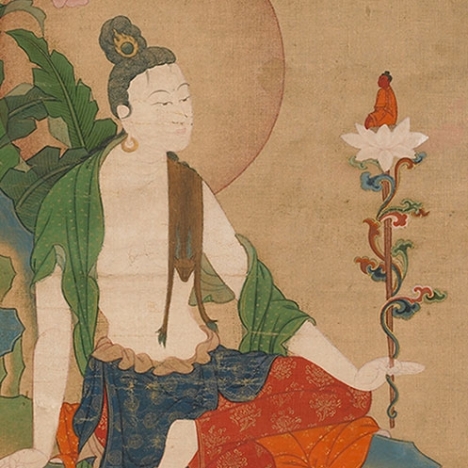
Kanha, “The Black One,” one of the most popular of the eighty-four Indian great Tantric adepts (mahasiddha), lived in India around the seventh or eighth century. He was originally a Hindu yogi, but after becoming the primary disciple of the mahasiddha Virupa, Kanha entered a lineage that eventually became foundational to the Sakya tradition, one of the four main schools of Tibetan Buddhism.
His brow furrowed in an intense expression of concentration, he bears the characteristics of an accomplished ascetic. He sits in a yogic pose on an antelope hide draped over a patterned cushion, his right leg supported by a strap. His long matted hair is piled on top of his head in a massive coil and bone ornaments cross his chest. This solid, impressive sculpture once belonged to a set of the Path and Result (Lam ‘bras) lineage portraits of the teachers in the Sakya School lineage.
H 14 1/2 x 9 3/4 x 7 1/4 in.
C2003.23.4, HAR90822
- https://dev.rubinmuseum.org/images/content/722/c2003.23.4har90822-front-(a)__zoom.jpg
- https://dev.rubinmuseum.org/images/content/722/c2003.23.4har90822-back-(a)__zoom.jpg
- https://dev.rubinmuseum.org/images/content/722/c2003.23.4har90822-front-(a)__zoom.jpg
- https://dev.rubinmuseum.org/images/content/722/c2003.23.4har90822-back-(a)__zoom.jpg

__slider.jpg)
__slider.jpg)
